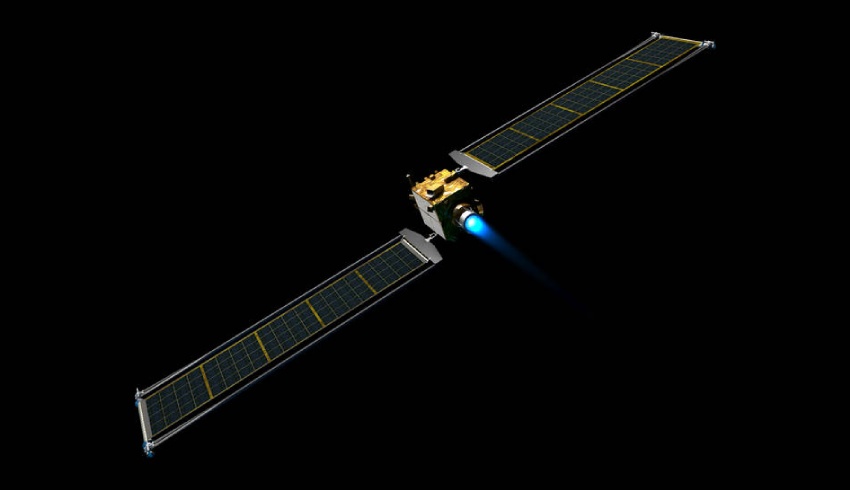It is scheduled to launch no earlier than 1:20am EST Wednesday, 24 November on board a SpaceX Falcon 9 rocket from Vandenberg Space Force Base in California.
DART will be the first demonstration of a deliberate kinetic impactor: a spacecraft targeted to strike an asteroid at a speed of roughly 24,000 kilometers per hour in order to change the asteroid’s motion in space.
Its launch is the test bed of determining whether a spacecraft crashing into an asteroid is an effective way to change its course in space, avoiding potential collision with Earth.
The spacecraft is targeting the asteroid moonlet called Dimorphos, which orbits a larger asteroid named Didymos, NASA says.
In late 2022, DART will collide with Dimorphus to change its orbit within the Didymos binary system.
“The Didymos system is the ideal candidate for DART because it poses no actual impact threat to Earth, and scientists can measure the change in Dimorphos’ orbit with ground-based telescopes,” NASA says.
Didymos' primary body is approximately 780 metres across, and its secondary body is around 160 metres in size, and NASA says this is the typical size of an asteroid that could pose a threat to Earth.
According to NASA, no asteroid larger than 140 metres in size has a high potential of reaching Earth in the next 100 years, but as of October this year, only 40 per cent of those asteroids have been detected.
The DART mission is directed by NASA to the Johns Hopkins University Applied Physics Laboratory with support from NASA centres: the Jet Propulsion Laboratory, Goddard Space Flight Center and Johnson Space Center.
In a blog post late last week, NASA said the spacecraft officially attached to its payload adapter on 11 November inside the SpaceX Payload Processing Facility in California.
“Mating the payload to the adapter is a very important milestone for the mission since it is the critical interface between the spacecraft and launch vehicle, where the two come together and need to separate cleanly to send the spacecraft on its planetary defense journey,” said Marisa Wyssling-Horn, integration engineer with NASA's Launch Services Program.
DART was lifted from its processing stand and placed in the launch vehicle payload adapter, as the team mated the electrical connectors between the two.
After about a day, the spacecraft and adaptors were successfully attached, according to NASA.
“It is also an exciting milestone since it is the first time that the full team, which had been working together for years, came together in person on a major operation,” Wyssling-Horn said.

Isabella Richards
Bella Richards is a journalist who has written for several local newspapers, her university newspaper and a tech magazine, and completed her Bachelor of Communications (Journalism) at the University of Technology Sydney in 2020. She joined Momentum Media in 2021, and has since written breaking news stories across Space Connect, Australian Aviation and World of Aviation.
You can email Bella on: [email protected]

